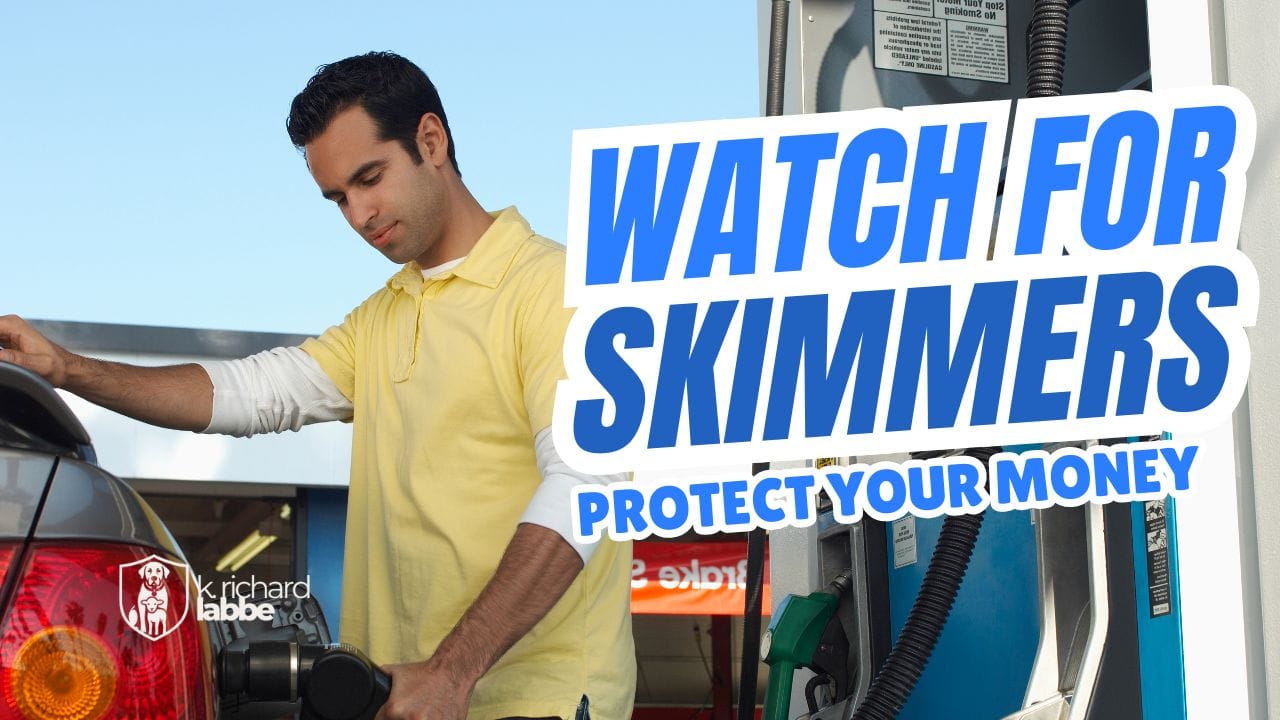Skimming: A Sneaky Scam (And How You Can Shut It Down)
Skimming doesn’t just steal your card—it steals your peace. But a few smart moves can shut it down before it starts. Let’s build your scam shield—one habit at a time.

What Happened: My Own Wake-Up Call
It started with a phone call I didn’t expect.
“Hi, this is your credit card company. We’re verifying a few purchases. Did you just try to buy $600 worth of electronics online?”
I hadn’t.
Turns out, my card had been skimmed—likely at a gas station pump a few days earlier. No one stole my wallet. No one hacked my email. But someone quietly copied my card info and used it to create a fake.
Thankfully, the company flagged it fast and shut it down. But it left me rattled. I wasn’t careless. I didn’t fall for a scammy email. I was just living my normal life.
That’s what makes skimming so dangerous. It doesn’t need your permission. It just needs a few seconds—and a little inattention.
What Is Skimming?
Skimming is a type of fraud where criminals place hidden devices on card readers—especially at gas pumps, ATMs, and self-checkouts. These devices copy your card’s magnetic stripe when you swipe or insert it. Some setups also include tiny cameras to record your PIN as you type.
Once scammers have your data, they can:
- Create fake cards
- Drain your accounts
- Go on a shopping spree—in your name
What It’s Costing People
The FBI estimates skimming costs consumers and banks over $1 billion each year (1).
A single stolen card can lead to thousands in fraud—within hours.
Most victims don’t know until their bank calls—or their balance disappears.
Don’t wait for that call. Let’s build the habit now.
How to Spot a Skimmer (and Outsmart It)
Scammers count on you being too rushed or too polite to check. Don’t give them the win.
Here’s what to look for:
- Wiggle the card reader. If it feels loose, bulky, or like a second layer—don’t use it.
- Cover your hand. Always shield the keypad when entering a PIN.
- Look for extra attachments. Mismatched colors, sticky residue, or awkward plastic pieces are red flags.
- Watch for tiny cameras. Especially above or beside the keypad.
- Stick to busy, well-lit locations. Remote or poorly maintained machines are easier targets for scammers.
- Use contactless or tap-to-pay when you can. It’s encrypted and immune to skimming.
What To Do If It Happens to You
If you’ve been skimmed—or even suspect it:
- Call your bank or card issuer immediately. Freeze or cancel the card.
- Review recent transactions. Watch for small “test” charges as well as big ones.
- Report the fraud to the FTC: reportfraud.ftc.gov
- File a police report. It may help with recovery and alerts others nearby.
- Notify the business. They may not know their machine was compromised.
And if it was your debit card? Act fast. You’re protecting your real money, not a credit line.
Safer Habits Moving Forward
Here’s how to outsmart the scam before it starts:
Use a credit card—not a debit card—at gas stations and ATMs.
Credit cards are safer because they don’t draw directly from your bank account. If someone uses your credit card fraudulently, you’re protected by federal law and usually not responsible for more than $50—and most issuers cover the entire loss. With a debit card, however, the money is pulled straight from your checking account. If you don’t catch the fraud quickly, you could be on the hook for hundreds—or even thousands. Even if it’s eventually refunded, the process can take days or weeks, leaving you scrambling to pay bills or cover living expenses.
Turn on transaction alerts in your banking app. It’s your early-warning system.
Switch to a mobile wallet like Apple Pay or Google Pay. These use encrypted, one-time-use codes that cannot be skimmed.
Build the habit: If a card reader wiggles, walk away. Trust your instincts.
Talk about it with others— especially aging parents or tech-anxious friends. Scam prevention is a team effort.
Do This Today
- Switch your default fuel or ATM payment method to credit.
- Add a mobile wallet and test it out somewhere you trust.
- Set up account alerts for every card you use.
- Teach one other person what to look for.
Stewards of What We’ve Been Given
You work hard for what you earn. Every dollar is a trust—and a tool. Skimming isn’t just annoying—it’s a threat to your stewardship.
Protecting your accounts is part of living wisely, generously, and ready.
Final Word: Prepared, Not Paranoid
I never saw the skimmer that got me. But I see things differently now.
You don’t have to live in fear. You just need to stay aware. A little caution, a few habits, and some shared wisdom go a long way.
Prepared, not paranoid. That’s how we fight back—one habit, one person, one gas pump at a time.
Stay safe. Be ready. Online and off.
Every effort has been made to ensure the accuracy and reliability of the information presented here. While Labbe Media, LLC strives to offer clear, well-researched guidance, this content is intended for educational purposes only and isn’t a substitute for professional advice tailored to your situation. We encourage you to use this material as a starting point—and to double-check details and consult trusted professionals when making important decisions.
1 https://www.fbi.gov/how-we-can-help-you/scams-and-safety/common-frauds-and-scams/skimming
